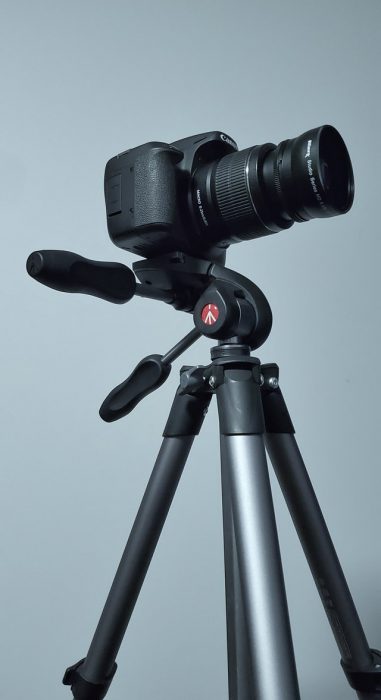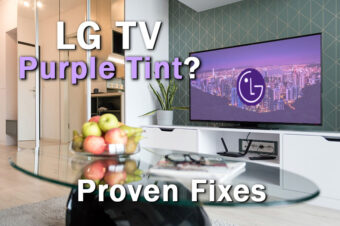This site is part of various affiliate programs. Links may give us a small compensation for any purchases you make, at no additional cost to you. Please read the disclaimer policy for full details.
In short, the difference between Carbon Fiber vs Aluminum Tripods is that carbon fiber is more stable, stronger, lighter and more expensive than aluminum tripods.
The construction of your tripod might seem inconsequential, but the pros and cons of carbon fiber vs aluminum tripods become clear the more time you spend carrying your tripod on hikes, or trying to setup for a photo in gale force winds.
If you shoot primarily in a studio or other fixed location, your tripod constuction won’t matter much to you as long as it is stable, but if you are an outdoor photographer, it becomes a bigger deal. An aluminum or carbon fiber tripod construction are the most common kinds of tripods, which are differentiated mainly on weight, stability and price, although there are some additional points to be aware of when it comes to real world use. Take a look at the sections below to find out more.
Carbon Fiber vs Aluminum Tripod Stability & Weight
The weight difference between the two materials is obvious as soon as you pick up the tripods.
Carbon fiber tripods are lighter than aluminum tripods, but there isn’t a massive difference.
But the difference between the aluminium or carbon fibre tripod might not seem impressive on paper. For example, the Manfrotto 055 Aluminum 3-section tripod weighs 2.5kg (~5.5 lbs), while the Manfrotto 055 Carbon Fiber 3-section tripod weights 2kg (~4.5lbs).
If your tripod lives in your car, and you just grab it to take photos at the roadside, the weight won’t make much difference to you. But from personal experience, you certainly notice the weight if you are on an all-day hike with the tripod over your shoulder.
Weight doesn’t just play into the inconvenience of carrying a tripod though – it also is part of determining the tripod’s stability. The heavier the tripod, the better it is able to withstand strong winds without shaking. If you shoot outdoors, you will often find that your tripod is setup off center, so the weight is not evenly distributed across the legs. In that situation, even a small gust of wind can knock your tripod over, if it is too light. This can be countered by weighing down your tripod – most come with a hook underneath the center column that allows you to hang your photo bag from it, stopping it from blowing over in windy conditions.

Aluminum vs Carbon Fiber Tripod Cost
Several years ago, the price difference between aluminum vs carbon fiber tripods was in the range of 50%, with carbon fiber being the pricier option, and there were no entry level options for beginner photographers.
Nowadays, carbon fiber is mostly 20 – 30 % more expensive that aluminum, and there are entry-level models available.
You can still spend a fortune on a carbon fiber tripod, as you always could, but the addition of entry level models, under $100, makes them an afforadable option for everyone.
Of course, everyone has a budget they are working to, and it may be that the extra affordability of aluminum tripods means that if you were to get one, you could put the money saved towards another photography accessory that you couldn’t otherwise get.
The takeaway here is that carbon fiber tripods are not as expensive as you may think, and you don’t have to blow your budget to get one.
Subscribe to the mailing list and get a free download link right now
Tripod: Carbon Fiber vs Aluminum – Practical Differences in the Real World
Theoretically, carbon fiber is a much stronger material than aluminum, and will survive real world knocks and scratches much better. In practice, aluminum will survive everything you can throw at it. This is true for both tripods and monopods.
Other, non-aluminum parts of the tripod, like the locks that hold each leg in position, will fail before the material of the legs. I have taken aluminum tripods around the world, into all environments, and the material itself has never let me down.
There are really only two practical differences between carbon fiber and aluminum tripods in the real world. First, carbon fiber is a much poorer transmitter of heat than aluminum. This means that carbon fiber is rarely too cold to touch, even if left outside on a very cold day, while aluminum always feels cold, and can in fact be difficult to hold without gloves in the winter.
But the biggest difference between the two is in terms of tripod stability. In high winds, the friction of the wind against the tripod legs can start a reasonance and vibration within the structure of the tripod. You can feel a high frequency shaking within the tripod legs that is not necessarily obvious to the eye, but will result in blurry photos.
This seems to be caused by a combination of the thickness of the legs – thinner tripod legs are more susceptible – and the strength of the material used. From the Manfrotto example I used earlier, the carbon fiber tripods legs are marginally thinner, but carbon fiber is a much stronger material, with far less ‘give’ than aluminum. Therefore, carbon fiber tripods should be less susceptible to this vibration, giving you a steadier base and less blurry photos.
This additional shock absorbancy and increased stability of the carbon fiber tripods can make a huge difference in high winds.

Carbon Fiber vs Aluminum Tripod Examples
The options below are examples of the best travel tripods currently available in aluminum vs carbon fiber models. The more expensive option is the Manfrotto carbon fiber tripod, while the best budget tripods are the Neewer models.
Manfrotto Befree Advanced
The new Befree Advanced range from Manfrotto are the current top contenders for being the best travel tripods. Although the range is primarily aimed at the more budget end of the market, with the majority of models being aluminum, there is a high-end carbon fiber model available.
You can choose between M-lock legs (twist locks) or QPL lever lock, with the former being my preference as they take up less space and are easier to get to your required tightness.
With side pull selectors to allow quick setup of the tripod, and an included 494 center ball head with three independent control knobs, and the load capacity to take even the sturdiest DSLRs, the Befree tripods are excellent value for money.
Manfrotto Element Traveller Big
Manfrotto are one of the biggest producers of tripods. Their element traveller big series make a good tradeoff between weight and size, although if you wanted a lighter, smaller tripod, the element traveller (without ‘big’ on the end) makes a good compromise.
The Manfrotto Element Traveller Big series of tripods are the best tripods for windy conditions in my opinion, as they are very solidly built and have hooks underneath the center column where you can hang your photo bag to weigh your camera and tripod down.
Neewer Tripod
Neewer are a younger brand, making cheaper, more entry-level tripods that nonetheless get good reviews across the board. The Neewer carbon fiber tripod is a better option than the Manfrotto version, if you are more price limited.
Are Carbon Fiber Tripods Worth It?
Carbon fiber tripods are worth it if you want to reduce the weight of your camera setup and particularly if you are taking photos in very cold environments. In my opinion, the small additional cost of a carbon fiber tripod is very good value for money.
Hopefully this has helped you see the differences between carbon fiber and aluminum tripods. The choice you make should be made first on what kind of situation you will be photographing in. Will you be hiking all day, or only moving a few steps from your car? Will you be flying and want to take your tripod in the plane cabin?
There are tripods in both aluminum and carbon fiber to suit all budgets, so cost itself should not be an issue, although it makes sense to avoid the budget brands (eg. Amazon Basics), as these are not made to the same high standards as the established brands, and you will see breakages and camera slipping when you use these in real life.
Personally, I choose a tripod based first on folded height (so it will easily fit in a cabin bag or day pack), then maximum height (I want flexibility in how I use the tripod), and finally weight and price. These are the main criteria, so set your own order, and you should be able to find the carbon fiber or aluminum tripod that is right for you.
Read More:
What are the best cameras under $300?
Choosing the best DSLR camera for beginners
How to remove lens flare in Photoshop


![[FIXED] TCL Roku TV Stuck on Red Screen?](https://www.lapseoftheshutter.com/wp-content/uploads/2021/10/tcl-roku-tv-stuck-on-red-screen-340x226.jpg)



Leave a Reply